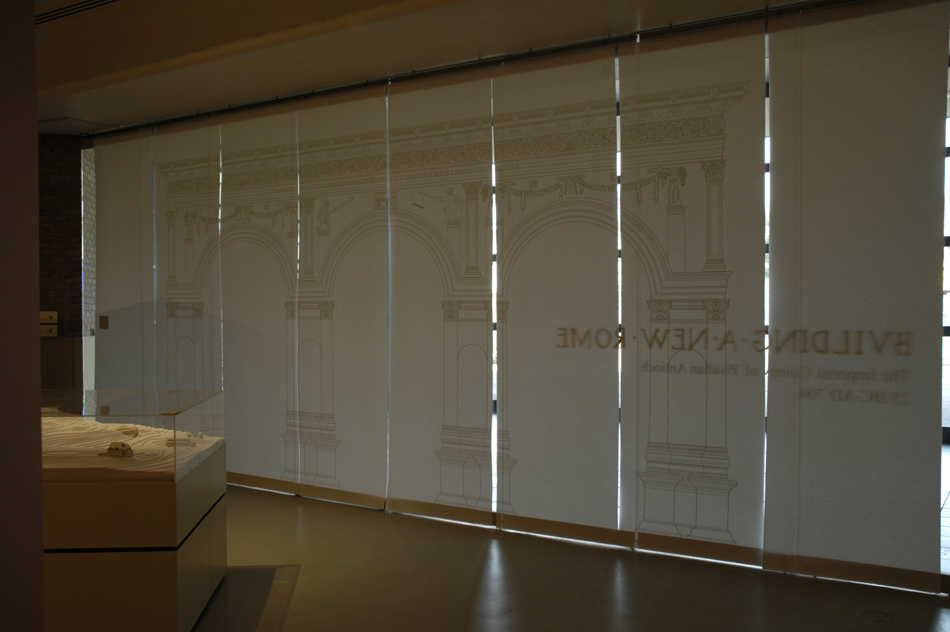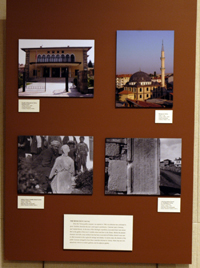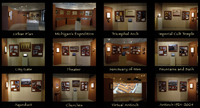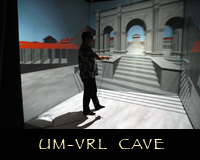
Duderstadt Gallery: Epilogue

ACKNOWLEDGMENTS
The exhibition, Building a New Rome: The Imperial Colony of Pisidian Antioch,
was organized under the auspices of the Kelsey Museum of Archaeology of
the College of Literature, Science and the Arts by a team of graduate
students from the Interdepartmental Program in Classical Art and Archaeology
(IPCAA), the Department of Classical Studies, the Department of History
of Art, and the Museum Studies Program working under the direction of
Professor Elaine Gazda, Curator of Hellenistic and Roman Antiquities.
J. Matthew Harrington, Lydia Herring, Hima Mallampati, Adrian Ossi, Katharine
Raff, and Benjamin Rubin prepared sections of the installation; Lori Khatchadourian
contributed a chapter to the catalogue, and Diana Ng assisted with the
web site.
Virtual Antioch and the physical model of the site were prepared in collaboration with Professor Klaus-Peter Beier and his staff at the UM 3D Lab of the Digital Media Commons. The Institute for the Humanities and the Horace H. Rackham School of Graduate Studies funded this collaboration and other elements of the exhibition with a generous grant for Collaborative Projects in the Humanities. The International Institute’s Fund for International Experiential Learning for Graduate Students and Professional School Students enabled a research trip to Turkey in the summer of 2004. The Kelsey Museum of Archaeology, the Departments of Classical Studies and History of Art, IPCAA, and the Horace H. Rackham School of Graduate Studies contributed additional funding for the exhibition and related travel.
We were greatly aided in our research on Pisidian Antioch by Dr. Ünal Demirer, who at the time of our visit to Antioch in 2004 was Director of the Museum in Yalvaç, Turkey, and in charge of the archaeological site. Our research also benefited from consultation with a number of scholars—Professor David Potter of the U-M Department of Classical Studies; Professor Brenda Longfellow of the University of Iowa; Professor Edward Owens of the University of Swansea; Professor Stephen Mitchell of the University of Exeter; Professor Jeremy Rutter of Dartmouth College; Professor John Cherry of the U-M Department of Classical Studies and Kelsey Museum; and Dr. Rossitza Roussanova Schroeder, Research Assistant at the Kelsey Museum.
The exhibition team thanks staff members of the Kelsey Museum—Sharon Herbert, Director; Margaret Root and Terry Wilfong, Curators; Scott Meier, Museum Exhibition Coordinator and his assistant, Kenneth Clawson; Sebastian Encina, Coordinator of Museum Collections; Robin Meador-Woodruff, Curator of Slides and Photographs; Suzanne Davis, Curator for Conservation; Kate Carras, Registry Assistant; Todd Gerring, Coordinator of Museum Visitor Programs; Margaret Lourie, Editor; Helen Baker, Administrative Associate; Jackie Monk, Office Assistant; Alexander Zwinak, Student Services Assistant; Michelle Biggs, Administrative Assistant; and Sandra Malveaux, Secretary—and the staff of the Digital Media Commons—Kathi Reister, Facilities Assistant; Glenda Radine, Academic Outreach Assistant Director; and Tom Bray, Systems Project Coordinator—for their invaluable assistance.
Elaine K. Gazda
Professor and Curator,
Department of History of Art and
Kelsey Museum of Archaeology
The interior of the gallery's front windows. A new
reconstruction of the City Gate (printed on large sheets of paper) was
hung inside the front windows of the gallery. In addition to the decorative
effect, this print controlled the quantity of light entering the gallery,
an essential concern for conservation of the artefacts and Woodbridge
drawings as well as for viewing of the movie on the three-panel theater.
Digital reconstruction of the City gate courtesy of Adrian
Ossi
February 18, 2006
Digital Image
Courtesy of J. Matthew Harrington



